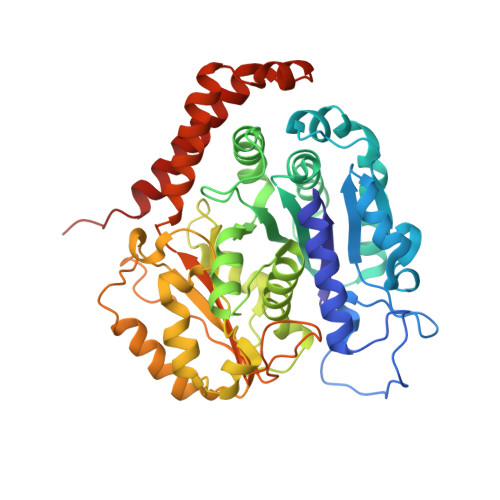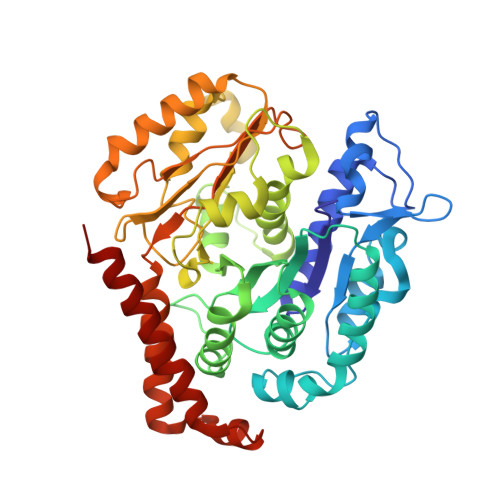Subnanometre-resolution structure of the doublet microtubule reveals new classes of microtubule-associated proteins.
Ichikawa, M., Liu, D., Kastritis, P.L., Basu, K., Hsu, T.C., Yang, S., Bui, K.H.(2017) Nat Commun 8: 15035-15035
- PubMed: 28462916
- DOI: https://doi.org/10.1038/ncomms15035
- Primary Citation of Related Structures:
5UBQ, 5UCY - PubMed Abstract:
Cilia are ubiquitous, hair-like appendages found in eukaryotic cells that carry out functions of cell motility and sensory reception. Cilia contain an intriguing cytoskeletal structure, termed the axoneme that consists of nine doublet microtubules radially interlinked and longitudinally organized in multiple specific repeat units. Little is known, however, about how the axoneme allows cilia to be both actively bendable and sturdy or how it is assembled. To answer these questions, we used cryo-electron microscopy to structurally analyse several of the repeating units of the doublet at sub-nanometre resolution. This structural detail enables us to unambiguously assign α- and β-tubulins in the doublet microtubule lattice. Our study demonstrates the existence of an inner sheath composed of different kinds of microtubule inner proteins inside the doublet that likely stabilizes the structure and facilitates the specific building of the B-tubule.
- Department of Anatomy and Cell Biology, McGill University, Montréal, Québec, Canada H3A 0C7.
Organizational Affiliation:




















